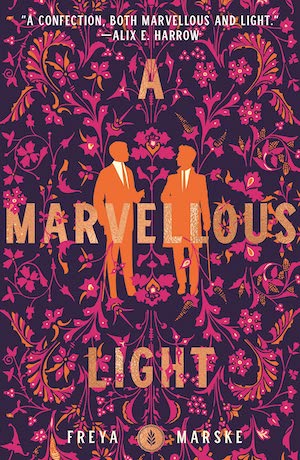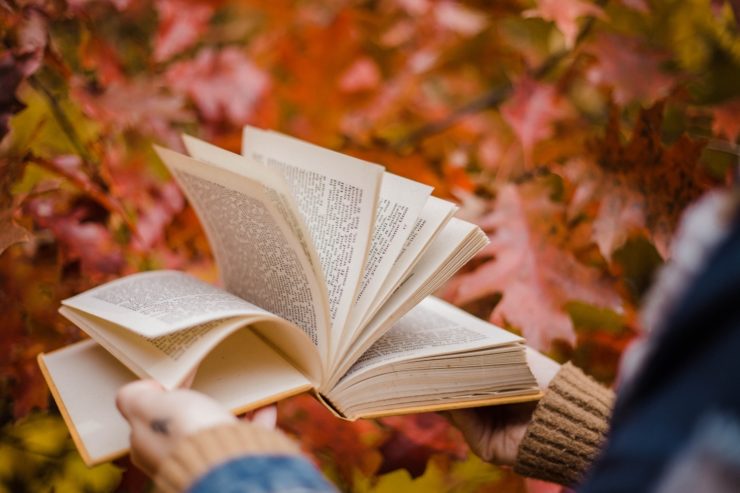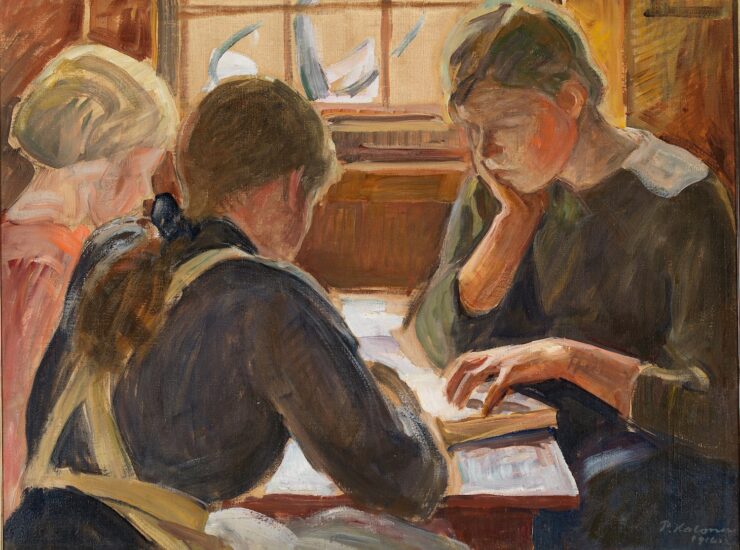Earlier this year, the New York Times took a look at the history of summer reading, which has apparently been an annual topic for the paper since 1897. (This is way earlier than I would have guessed.) Writer Jennifer Harlan notes that the concept “emerged in the United States in the mid-1800s, buoyed by an emerging middle class, innovations in book publishing and a growing population of avid readers, many of them women.”
Her history is excellent, but another quote near the beginning caught my eye—or, to be more precise, distracted me so much that it took me two tries to get through the article. In 1968, in the pages of The New York Times Book Review, critic Clive Barnes wrote, “Why summer reading? One doesn’t have winter reading, or fall reading (that I suppose would have too autumnal an echo).”
First of all, absolutely one has winter reading; some books beg to be read under a blanket and with a warm drink. But he’s even more wrong about fall reading. Too autumnal? There’s no such thing. And SFF is full of fall books no matter how you slice it.
There are literal falls: empires and kingdoms and entire planets fall all over the place. But it’s more than that: There’s a sense in so many SFF tales, whether epic fantasies or space exploration, of things coming to a place of settling in, or settling down, in a way that’s both hopeful and mournful—not the full dark of winter or the brightness of summer, but in between, when things are changing but we admire the change. Lots of fantasies have this elegiac quality, a graceful mix of loss and growth. And lots of others have a different feeling I associate with fall: a kind of golden warmth, the sense of something—a relationship, a city, a magician—that has taken time to grow into itself. A fall book starts from a place where there is or was a solid foundation, and now it either needs to change or crumble.
Is that too literal? I don’t think so. Every season has its associations, and fall has many: preparing for the days to get shorter, harvesting the last crops before winter, remembering the dead, celebrating the bounty brought by summer. Some of today’s associations are marketing, but most of them come from somewhere old and true, whether the myth of Persephone or any number of harvest festivals. Fall is celebration, but also preparation. And those feelings and associations echo through certain books.
Buy the Book


A Marvellous Light
Like so many things, this vibe can be traced at least in part back to Tolkien. The Lord of the Rings is an absolutely fall story. It’s the fall of evil in the form of Sauron, but it’s also a change in the foundation of the world, a time of shifting and fading alongside preparing for what comes next. As the book—or series; I’m not here to split hairs—winds down, it moves through to winter (Frodo leaving) and on to spring (“Well, I’m back.”). The Hobbit could be summer to Lord of the Rings’ fall. It’s more rollicking adventure; the consequences don’t manifest until a generation later.
Fall and spring books are, I think, most aware of the earth—this Earth or the soil of another planet—and how we live on it; they’re the books where you understand how people feed themselves, how seasons affect them, how things need planting and tending and storing. The Fifth Season is fall through and through, shifting and grumbling and not sure yet how to survive. Robin Hobb’s Farseer Trilogy starts from a place that’s well-established but about to go through a huge change. Though Fitz’s story is a young man’s spring, by the third book, the series is fully autumnal, and gets more so as Fitz and the Fool’s adventures continue in subsequent trilogies.
Le Guin’s Tehanu is a fall book of the other kind, a story of settling in and solidity, but with a vital spark of change. Hannah Whitten’s For the Wolf, with its prickly, shifting forest and twisting backstory, is fall in all senses of the word.
In publishing, fall books mean something else: Fall is where the “big” books go: the ones seen as potential award-winners, or that publishers would like everyone to give as gifts at the holidays. It doesn’t mean anything about tone or content the way that “summer reading” does, at least not as much, though you could argue that publishing’s fall books are more likely to be serious and concerned with weighty topics, heavier reads, as if readers are all going back to school to get some literary studying done.
But fall as a feeling and a vibe is much more interesting to me, and the more I think about it, the more I think that most books have a seasonal sort of feeling. American Gods is fall: all those long-established gods, fighting for their place in the hearts and minds of people! But Stardust is entirely summer, all starlight and green grass, and Good Omens obeys no seasonal direction whatsoever, preferring its own calendar.
A Long Way to a Small Angry Planet is spring, all new beginnings and ways to live in the world. Some epic tales lay claim to many seasons; She Who Became the Sun, despite the sun in its title, can’t be contained in just one time of year, and steals bits from them all. The Ten Thousand Doors of January is summer, like heat rolling across your body when you open the door from inside your air-conditioned apartment. Susanna Clarke’s books are winter, through and through: precise, full of edges and chills, beautiful in their construction. Aliette de Bodard’s House of Shattered Wings is winter, too, all those complicated lives in the rubble of war. Gothic stories are winters. Haunted house stories of all stripes are: they want you inside, whether or not it’s warm.
Fall books are some of my favorite books: Wicked is fall, and the last Magicians book, The Magician’s Land, feels like the way an autumnal tree is at its most beautiful right before it drops its leaves and stands bare and cold and ready to change again. I love every David Mitchell novel, but especially The Thousand Autumns of Jacob de Zoet, which puts that fall sense right in the title. S.L. Huang’s Burning Roses, which is full of mid-life grief, feels like the heavy side of fall, damp leaves and cold ground, but it’s not fully winter yet.
Fall isn’t just for cozy sweaters and steaming beverages and kicking leaves; it’s for pensive books full of powerful change. And there are so many good fall books, I don’t know how I’ll pick which one to read next.
Molly Templeton lives and writes in Oregon, and spends as much time as possible in the woods. Sometimes she talks about books on Twitter.














